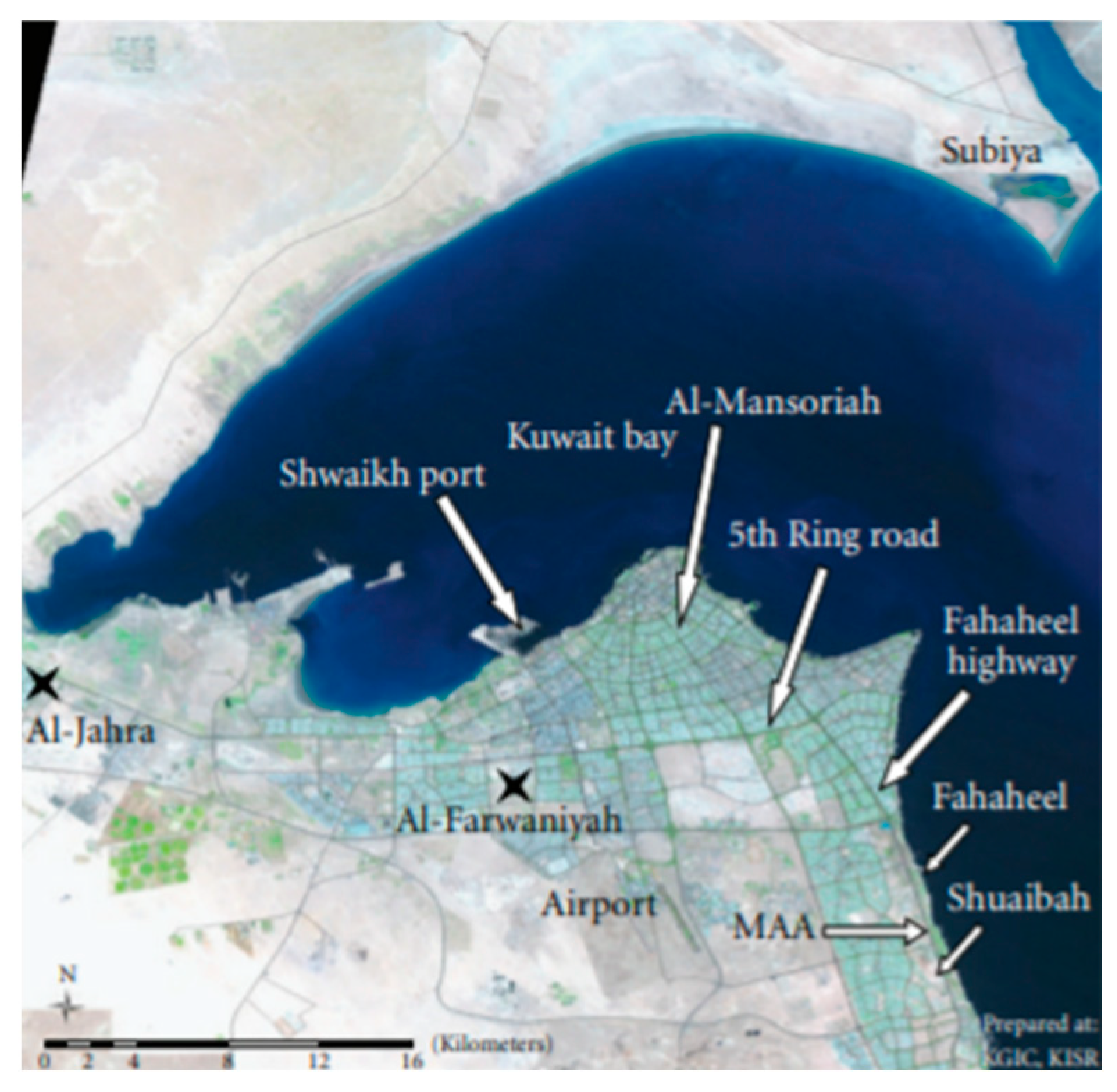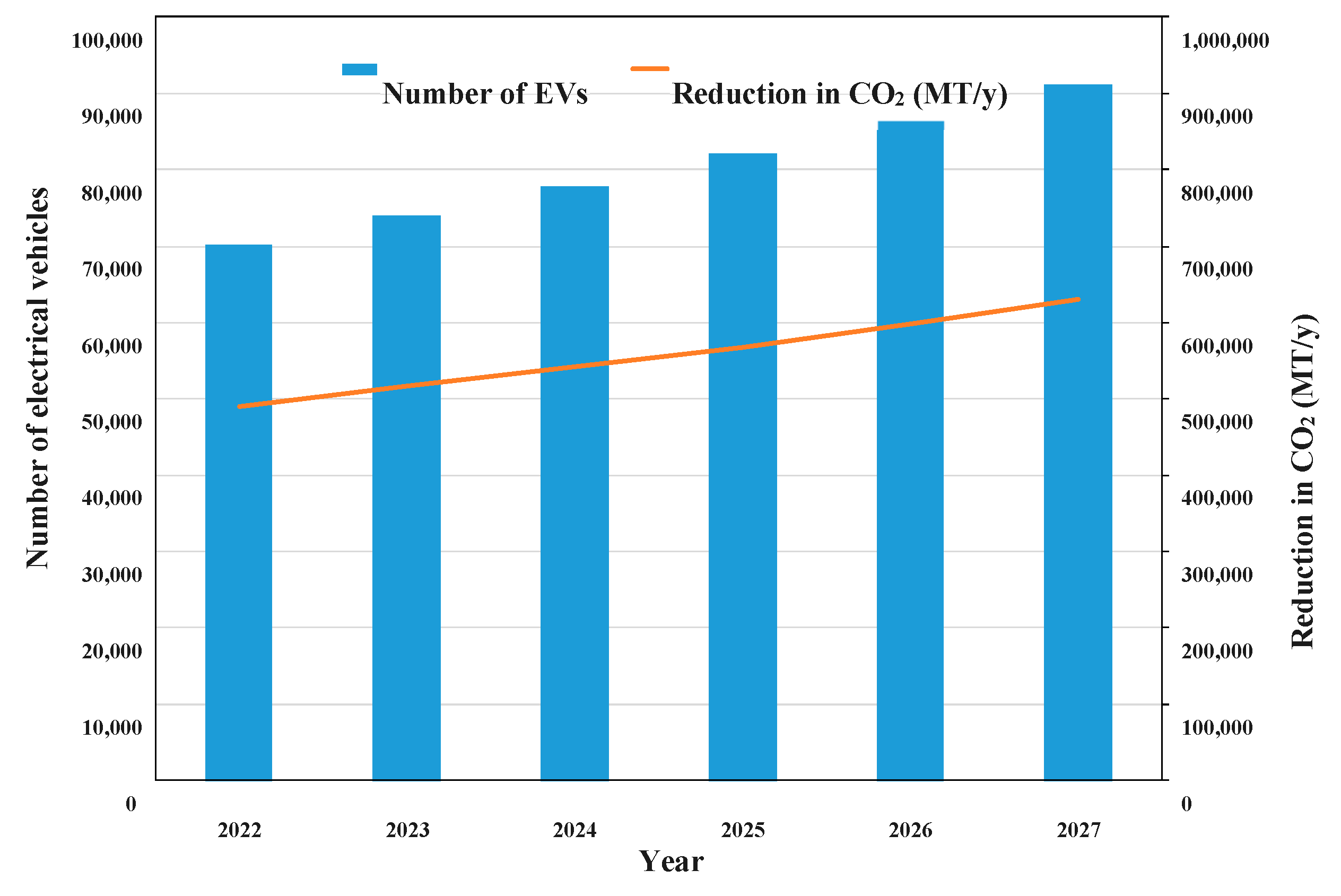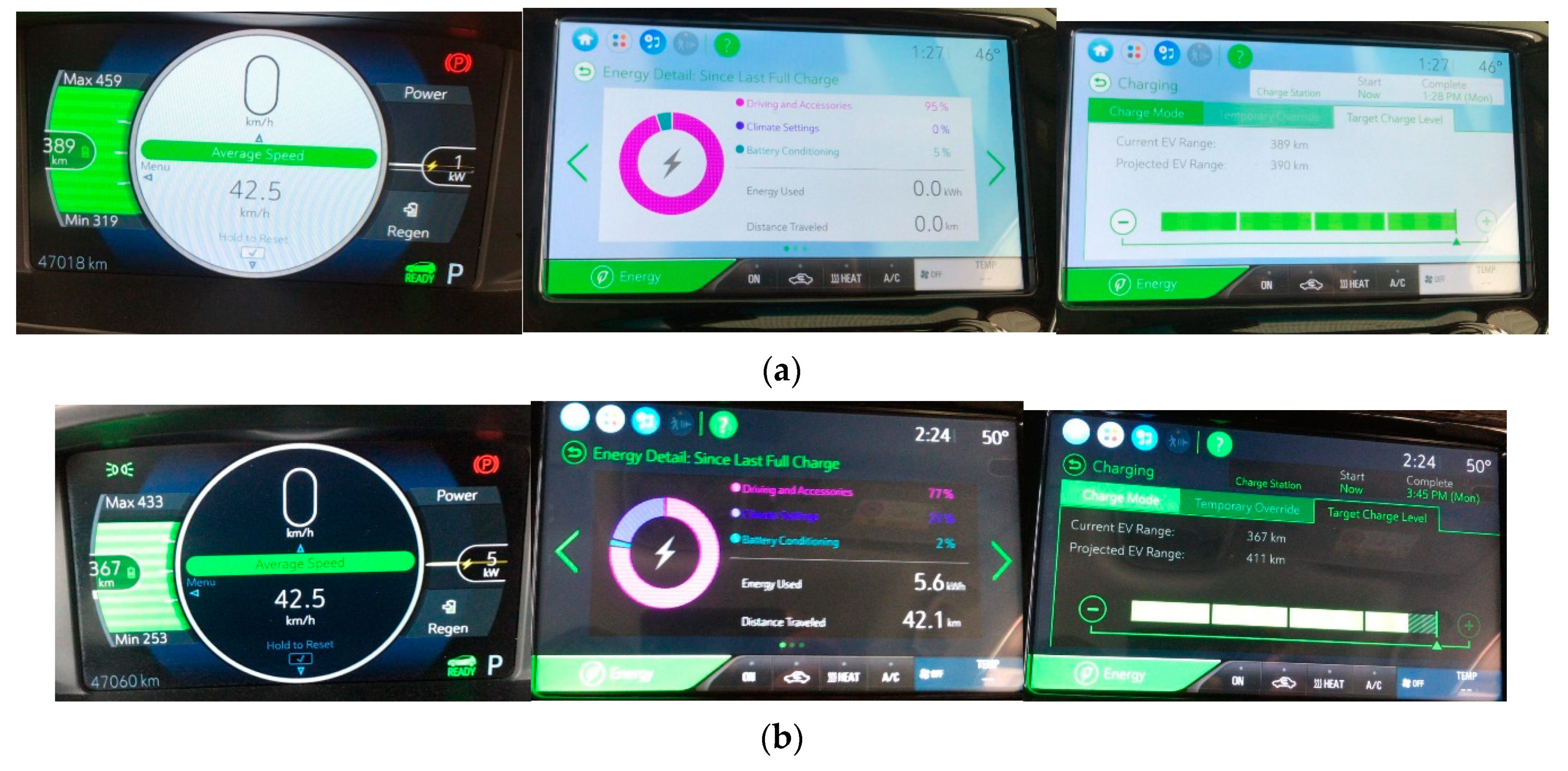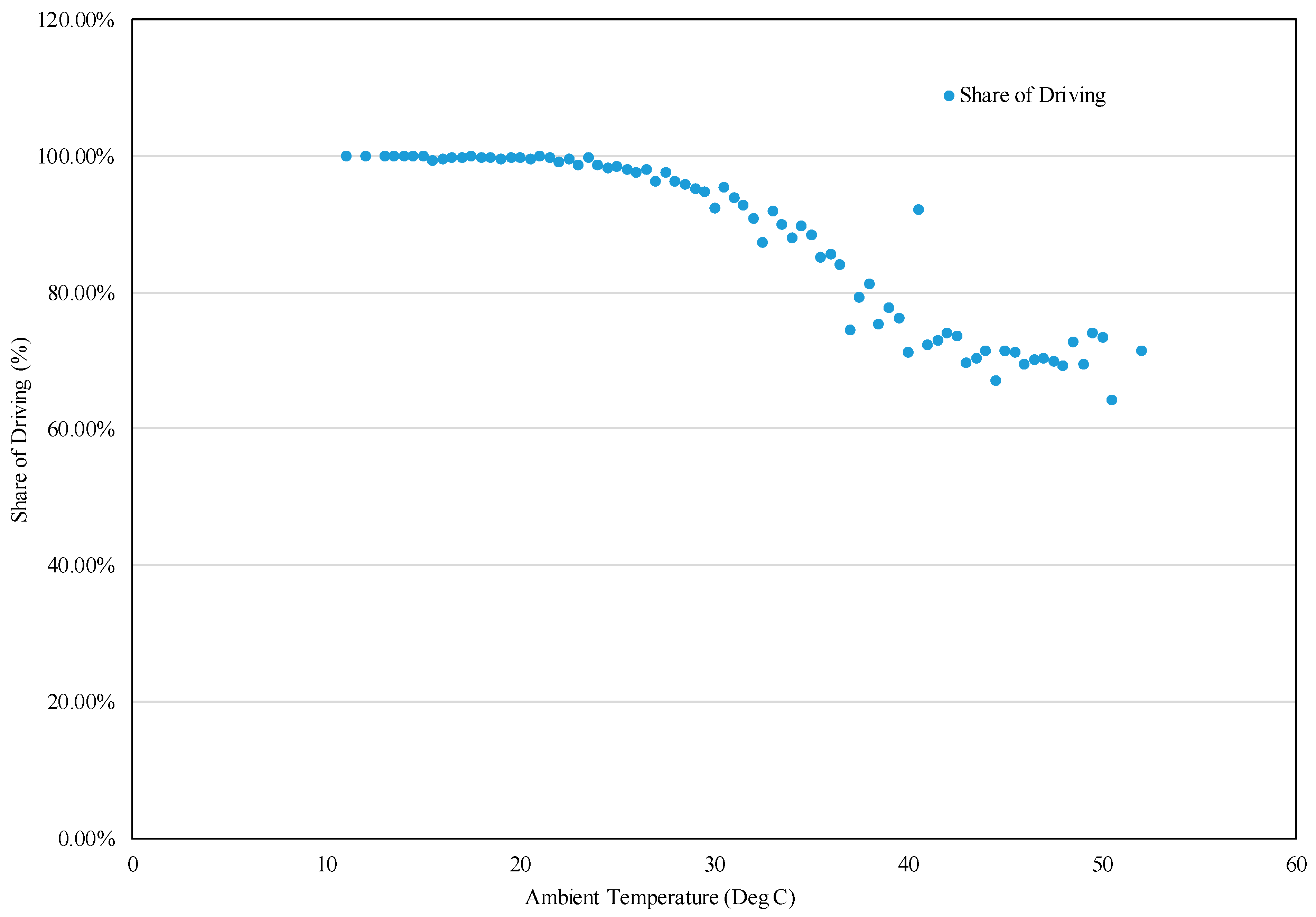1. Introduction
The urban areas in the state of Kuwait (
Figure 1) have experienced an “exponential growth in the number of motor vehicles” as a result of the “rapid economic evolution, and low prices of vehicles” [
1]. Thus, recent studies have expounded that the main obstacle in the transport sector is that the supply of “transport facilities has not matched the increase in demand” [
1]. Recent studies have also emphasized the importance of developing new strategies that aim to contain/reduce the impact of traffic congestion (visualized by an increased number of cars queuing on the road). This congestion is an “important issue in urban network due to the negative impacts such as delays, wasted fuel consumption, which causes atmospheric pollution” [
1]. Subsequently, “traffic congestions and rush hours within city limits and along major highways (i.e., King Abdulaziz (Fahaheel), 5th and 6th ring roads) contribute mainly to the levels of CO,
and VOC in the air” [
2]. According to these statistics, it is also critical to take into consideration the fact that for “every 33 residents in Kuwait, there are 100 cars registered” [
3].
Moreover, there are inevitable environmental and health consequences for these emissions, which negatively contribute to the air quality in Kuwait. The United States Environmental Protection Agency (EPA) “established National Ambient Air Quality Standards” in order to “protect public health” [
1]. Although the short-term standard of PM2.5 is 35 µg/m
3, Kuwait has averaged 38.30 µg/m
3, placing it in the “unhealthy for sensitive groups brackets.” This empirical data explicates the “negative health implications” especially for the individuals with compromised immune systems in Kuwait [
1]. In reference to this, “air pollution in Kuwait is a major contributor to a number of health effects associated with many age groups” [
3]. Subsequently, the local health reports stated that “40% of the patients in a hospital situated in Kuwait during the period of August to October 1991 suffered from respiratory issues, baring first Gulf War effects and oil fields fires by retreating Iraqi troops” [
3]. Considering this, further studies were initiated to deduce the medical implications of harmful emissions. Therefore, numerous statistical analyses displayed the correlation between an increase in the “concentration of specific air pollutants and symptoms of reactive/nonreactive airway diseases” [
3].
Moreover, the traditional method to combat traffic congestion in Kuwait was to increase the capacity of road networks by “adding new roads or lanes” [
1]. However, this solution did not “reduce fuel consumption or decrease emissions” that were initially associated with traffic congestion [
1]. Furthermore, the negative impacts associated with fossil-fuel exhaustion are a common concern worldwide. This environmental issue “increased worldwide motivation for deploying EV’s as ecological and clean means of transportation” [
4].
In reference to this demand around the world, EV sales exponentially “grew from 320,000 in 2014 to 1.04 million in 2017” [
4]. However, to inspire and encourage EV utilization in Kuwait, it is critical to synchronously accelerate the expansion of fast charging stations (FCS), where EVs can be charged for 15–20 min [
4]. However, supplying FCS from the existing energy system imposes an extra burden on the electrical grid [
4]. Moreover, stochastic connections to charge EVs can potentially cause overloading at peak demand, creating instability and ultimately blackouts [
4]. Considering this, it is critical to explore additional resources for securing power to supply FCS [
4]. Hence, this concentration primarily emphasizes and investigates alternative sustainable technologies (such as PVs) utilized to power the EVs to potentially eliminate or significantly reduce the reliance on internal combustion engine (ICE) vehicles, which are based on fossil-fuel while synchronously decreasing harmful emissions. Moreover, in reference to this, if the electricity is explicitly generated by predominantly utilizing fossil-fuel-based sources (petroleum, coal, and gas), the substantial growth in the energy demand to supply the predicted/anticipated large number of FCS will expedite fossil-fuel reserve exhaustion, which will inevitably have severe ecological impacts [
4]. Additionally, deploying sustainable renewable energy sources (RES) can be utilized as alternative non-conventional and non-fossil-fuel-based solutions to fulfill the FCS power demand [
4].
Therefore, as a means to reduce the reliance on fossil fuels and mitigate greenhouse gas emissions, EVs have gained significant attention in recent years [
5]. Globally, the number of EVs on the road exceeded more than 10 million in the middle of 2021, and are expected to reach 120 million by 2030 [
3,
4]. This acceleration in sales is driven by many factors, including the breakthroughs in lithium-ion battery technology, cost reductions, and increase in range, stability, and lifetime. These milestones, coupled with the drive to net zero, allowed many traditionally manufactured vehicles to enter the market, resulting in cheaper and wider range of EVs to be commercially available [
2]. In addition, such development reduced customers’ anxiety, resulting in a higher number of technology adopters globally.
In addition, 24% of Kuwait’s fossil fuel consumption is used by the transportation sector and to generate electricity; this consumption is expected to increase further due to the increase in population. The high dependency on fossil fuels has pushed Kuwait to the list of top ten countries with high per capita CO
2 emissions [
6].
Another analysis conducted by the International Energy Agency (IEA) showed that the CO
2 emissions increased by 1.5% in 2017, led by China, India, and the European Union [
7,
8], whereas Middle Eastern countries recorded an extraordinary increase in CO
2 emission in the last two decades. Based on the Energy Information Administration (EIA), the CO
2 increased by over 200% in Middle Eastern countries. Road vehicles contribute around 75% of CO
2 emissions of the transportation sector among the different modes of transportation [
9]. Hence, moving to electrical vehicles and the electrification of all road transportation is a critical step in reducing direct CO
2 emission [
10]. Another study conducted by Al-Foraih et al. [
11] predicted that the CO
2 emissions from vehicles would increase by 77% from the base year of their research (2016). Assuming 3% of vehicles are replaced every year with EVs, the reduction in CO
2 will be significant and will help reduce per-capita CO
2 emissions. The following graph (
Figure 2) summarizes our estimation based on the results of Al-Foraih et al., assuming a 3% replacement rate and using the estimation of the impact on CO
2 emissions [
11].
As EVs do not emit CO2, they would definitely help to reduce the air pollution in the city. Additionally, EVs can be charged by any electrical energy, preferably generated by renewable resources. Even when charged from electricity from the local grid, which mainly depends on fossil fuels in Kuwait, it is still a good solution in localizing air pollution as the power plant stations are located far from the city.
However, the harsh climate conditions in Kuwait will have implications for the energy consumption of EVs; its effect on the electrical grid and charging infrastructure need to be studied. While a number of relevant studies were found in a review of the literature, the real-world performance of EVs in such harsh environmental conditions, specifically in hot countries, remains sparsely studied.
3. Methodology
To answer the aforementioned questions, a detailed research methodology was formulated. The methodology has the following steps:
Since there are no vehicle manufacturing companies functioning in Kuwait, it meets all vehicle demand by importing from other countries. Even though most vehicle manufacturers are investing in manufacturing EVs, the technology has not been widely adopted and remains a niche market. A literature survey was conducted to identify the availability of various models in the market along with their energy requirement, and the results are presented in
Table 1.
From contacting the local dealers, it was found that most of the models are unavailable in Kuwait. Accordingly, one of the available models was selected as a random sample to carry out the study while maintaining a low budget, to estimate wide market adoption. The specifications of the selected model (Chevrolet Chevy Bolt) are given in
Table 1. In addition to the aforementioned information, the specification claims that it can be fully charged within one hour, if a three-phase AC charger is used.
- 2.
Data collection
Since the selected car was not equipped with a data logging facility, photographs of the dashboard were taken at the start and end of every trip. Some photographs are given in
Figure 3. Data collection from vehicle use began in July 2019, and this paper analyses the data collected between 1 August 2019 and 31 October 2021. The period includes several months during which the government mandated restrictions on activities and movements of the population in order to address the COVID-19 pandemic via curfews of varying lengths. Partial lockdowns were generally applied during the evening and overnight hours were in operation from 22 March 2020 to 9 May 2020 and 31 May 2020 to 29 August 2020. A total lockdown was in operation between 10 May and 30 May 2020 and consisted of a 24-hour curfew.
Hence,
Table 2 reflects the types of information collected as part of data-collection process.
- 3.
Validation of performance in Kuwait weather conditions
Considering that none of the EVs were specifically designed for Kuwait’s weather conditions, verification of their performance was a high priority. From the customer’s point of view, two major factors were validated: time required to charge fully and the distance travelled until the battery was fully depleted.
- 4.
Statistical Analysis
The statistical modelling presented in this study investigated the relationship between temperature and energy intensity or consumption per kilometre of driving (
Figure 4). The EV’s performance was studied according to different scenarios and conditions. These scenarios included monitoring the EV’s technical performance by collecting data on distance travelled, electricity used, air temperature, and battery information. In addition, consumption levels of air conditioning and any electric usage within the car’s features were also considered, as shown in
Table 3.












